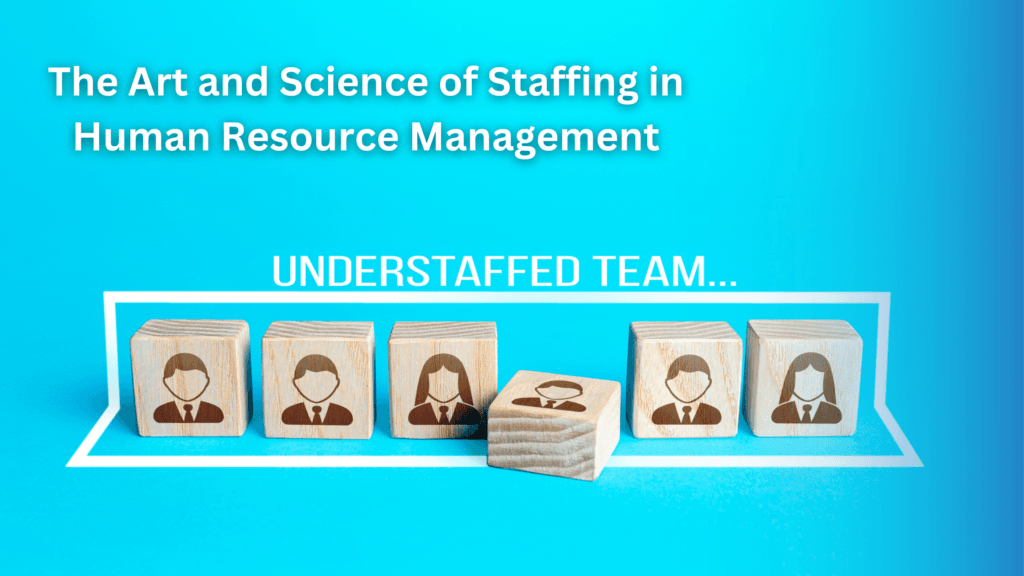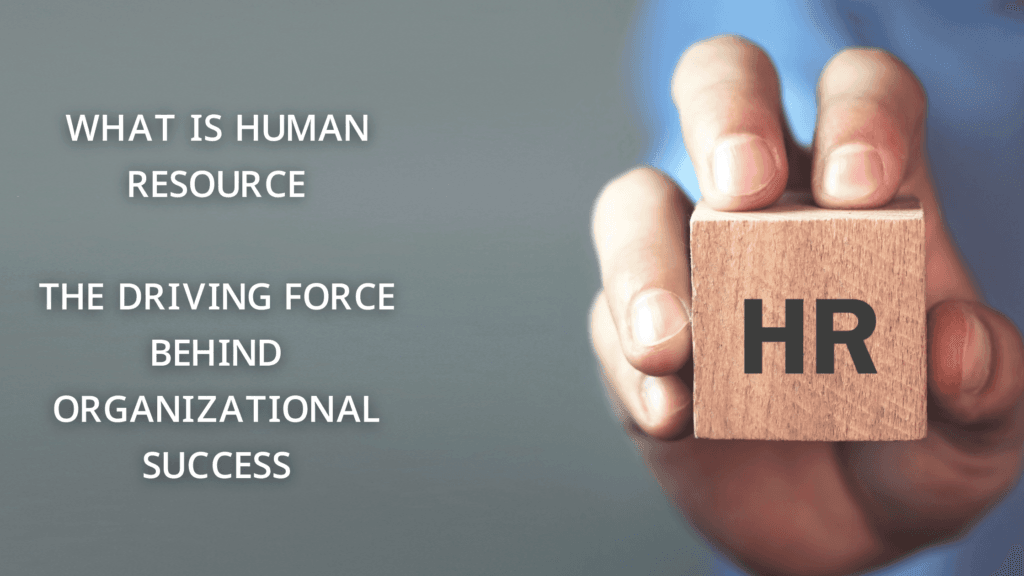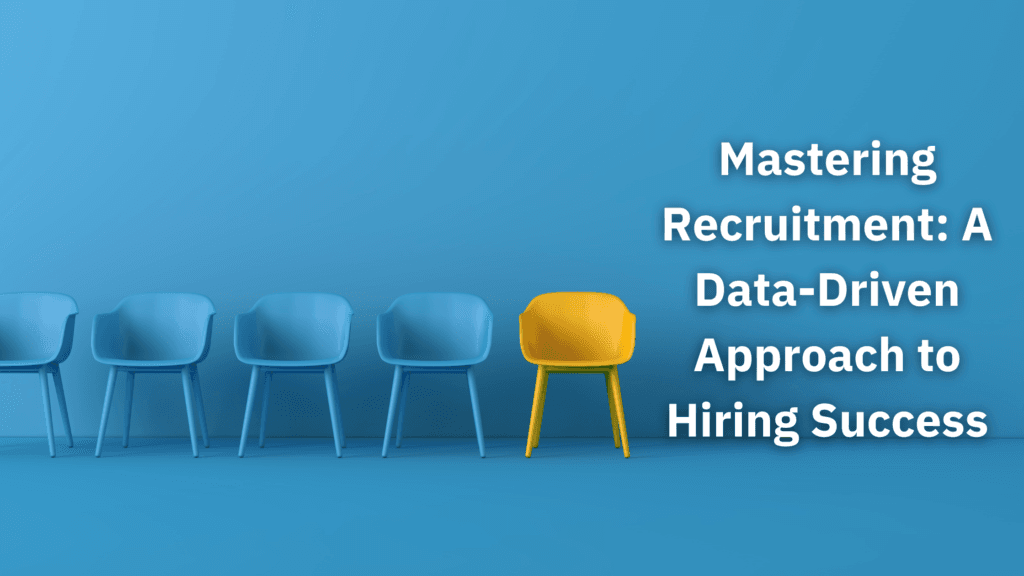Staffing is one of the most pivotal functions in Human Resource Management (HRM). It ensures that the right people are in the right roles, contributing effectively to the organization’s success. However, staffing is not just about hiring employees; it’s about building a workforce that aligns with the company’s objectives and culture while fostering growth and engagement.
Let’s dive deeper into how effective staffing can impact an organization and explore the nuances of this critical HRM function.
Understanding Staffing: More Than Just Hiring
Staffing is the process of identifying, recruiting, selecting, and developing the workforce. It involves long-term planning to ensure that the organization always has the talent it needs, not just today, but for the future as well.
Unlike recruitment, which focuses solely on bringing people in, staffing takes a holistic view by including onboarding, training, development, and retention strategies. It plays a crucial role in maintaining productivity and ensuring the smooth functioning of the business.
Why Staffing is Crucial for Organizational Success
Effective staffing is at the core of any successful organization. When done correctly, it ensures that:
- The right people are in the right positions: This improves efficiency, productivity, and job satisfaction.
- There’s a healthy alignment between employee skills and organizational needs: Whether the business is growing or downsizing, staffing helps maintain a balanced workforce.
- Talent retention is strengthened: A well-staffed organization offers career growth opportunities, which reduces turnover and keeps employees engaged.
Example: Consider the tech industry, where organizations like Microsoft prioritize continuous talent development. By strategically staffing teams with employees who possess the right mix of technical skills and leadership potential, they are able to innovate and stay ahead of the competition.
Key Components of an Effective Staffing Process
A successful staffing process doesn’t happen overnight. It requires careful planning and execution across several stages:

1. Workforce Planning: Preparing for Future Needs
Before recruitment even begins, companies must analyze their current workforce and predict future staffing needs. Workforce planning includes evaluating:
- The number of employees required.
- The skills and competencies necessary for specific roles.
- Anticipating future growth or changes in business strategy.
By aligning staffing plans with long-term goals, organizations avoid the risk of overstaffing or facing skill gaps.
Example: A retail company anticipating a spike in sales during the holiday season may plan to temporarily increase its workforce through short-term contracts or part-time employees.
2. Recruitment: Sourcing Talent Efficiently
Recruitment is the process of attracting qualified candidates to fill positions within the company. The method of recruitment will vary depending on the organization’s needs, whether through internal promotions, employee referrals, or external job postings.
An effective recruitment strategy not only considers technical expertise but also cultural fit. Organizations like Apple have thrived by hiring employees who are not just talented but also passionate about their mission.
The Selection Process: Choosing the Right Fit
Once potential candidates have been identified, the next step is selecting the best fit for the job. The selection process can be rigorous, involving multiple rounds of interviews, tests, and reference checks.
This stage is critical, as selecting the wrong person can lead to low productivity, dissatisfaction, and even early turnover. Effective selection doesn’t just assess technical abilities; it also examines personality traits, problem-solving skills, and compatibility with the company’s culture.
Example of a Selection Process:
At Google, candidates often go through multiple stages, including cognitive ability tests, leadership assessments, and team-based exercises. This comprehensive approach helps ensure that new hires not only excel in their specific role but also fit into the collaborative and fast-paced environment.
Onboarding and Orientation: Setting Employees Up for Success
Onboarding is more than just paperwork. It’s about integrating new hires into the organization, familiarizing them with the company’s culture, and providing the tools they need to succeed in their roles.

Effective onboarding reduces the time it takes for new employees to become productive and increases retention. In contrast, a lack of proper onboarding can leave employees feeling disconnected or overwhelmed.
Case Study Example: Netflix is known for its effective onboarding process. New hires receive extensive support during their first few months, ensuring they understand the company’s vision and can contribute meaningfully from day one.
Retention: Keeping Talent Engaged and Motivated
Once employees are hired and onboarded, retention becomes a top priority. High turnover is costly—both in terms of lost productivity and the resources required to recruit and train new employees.
Factors that Improve Retention:
- Career development opportunities: Employees are more likely to stay with a company that invests in their growth.
- Positive work environment: A supportive culture that values work-life balance helps keep employees engaged.
- Recognition and rewards: Employees who feel appreciated are more motivated to perform at their best.
Companies like Adobe focus on employee retention through continuous development programs and by fostering an inclusive work culture. By offering employees the chance to grow, they’ve been able to maintain a high level of retention and engagement.
Leveraging Technology in Staffing
In today’s digital age, technology plays an important role in optimizing staffing processes. From recruitment software to AI-driven tools, HR professionals now have more resources than ever to streamline their staffing efforts.
Examples of Technological Tools:
- Applicant Tracking Systems (ATS): Automates the recruitment process by filtering resumes and scheduling interviews.
- AI Screening Tools: AI can assist in identifying the best candidates by analyzing resumes and comparing them against job requirements, helping reduce unconscious bias.
- Data Analytics for Workforce Planning: Predictive analytics can help HR teams anticipate hiring needs based on trends in turnover, company growth, or even employee performance data.
Overcoming Staffing Challenges
Staffing is not without its challenges. From skill shortages to high turnover, HR teams often have to navigate complex issues. Below are some common challenges and how they can be tackled:
Challenge 1: Skill Gaps
Many industries are facing a shortage of skilled workers, particularly in tech and healthcare. Organizations can address this issue by investing in training and development programs to upskill existing employees rather than relying solely on external hires.
Challenge 2: High Turnover Rates
High turnover can significantly impact productivity. One solution is to focus on creating a positive workplace culture where employees feel valued and see long-term growth opportunities. Regular feedback and open communication also contribute to higher retention rates.
Challenge 3: Cultural Fit
Hiring employees who align with the company culture is as important as hiring for technical skills. Organizations must ensure that their staffing process includes cultural assessment criteria to maintain a harmonious and collaborative work environment.
Conclusion: Mastering Staffing for Long-Term Success
Staffing is a dynamic and continuous process that requires attention to detail, strategic planning, and a forward-thinking approach. It is not merely about filling vacant positions but about building a team that drives the organization toward success.
By understanding the different stages of staffing—from workforce planning to retention—HR manager can optimize his/her processes to ensure the organization remains agile, competitive, and ready for the future.



